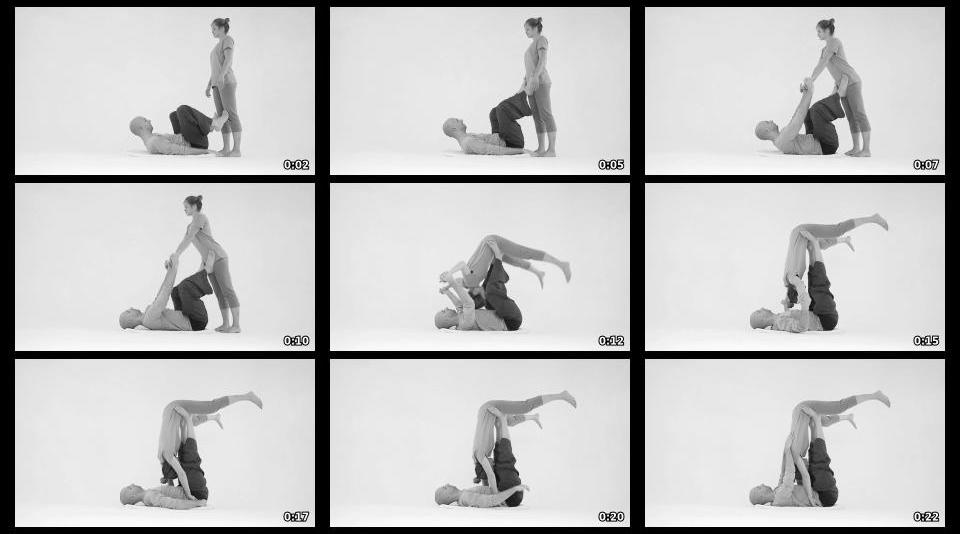Home > Beginners Flow > Standing to Forward Fold

1.1 general view
Standing to Forward Fold
Difficulty level: beginner
This is the first introductory element to
Flying Therapeutics. It enables you (the giver) to gently transition the
receiver from an upright and weighted standing position to a hanging and
unweighted folded position.
It is important you gain the trust of your receiver starting with this element so
they can fully enjoy the benefits of Flying Therapeutics. Practice it until you
can give your receiver a reassuring sense of stability and safety. To gain greater
confidence, practice it with receivers of different heights and weights, and
note the varying but subtle adjustments you may need to make for each receiver.
Start by having the receiver stand close enough so you can touch
their toes with your fingertips. Then locate the receiver’s pelvis and place
the soles of your feet just below them with your toes angled slightly outward.
Extend your hands (fingers pointed outwards) and invite the
receiver to place their hands in yours (their fingers pointed forward). Ask the
receiver to shift more weight on their hands while you gently push with your
feet against their thighs at the base of their pelvis.
When you find a comfortable balance,
bend your knees and bring the entire receiver’s weight forward and up onto your
feet. Then straighten your legs and lift the receiver off the floor.
Note that your hands trace a circular movement to support the receiver’s
hands until all their weight is upon your feet. Have the receiver bend at the
waist so their upper body is hanging freely in a vertical position, while their
legs are in a straddle position and parallel to the floor.
It's common for a first time receiver to try to support their
weight with their arms, but ask them instead to relax and let their arms hang loosely
to the floor on each side of your hips, palms facing skyward.
Place your hands on the receiver’s back to provide gentle support
and reassurance so they can sink deeper into the pose. Their spine should
slowly extend as they continue to relax and breathe.
1.7 spotter
The role of the spotter is an important one when you are learning new elements. They help assure the safety of both the giver and the receiver in order to avoid any unnecessary falls or injuries.
In this video, the spotter stands close to the receiver with
both hands positioned very close to their hips so they can quickly provide
support in the event of any instability.
The spotter is must always be very alert and paying attention since they need to be able to react quickly and effectively.
The giver and the receiver should always check that the spotter
is properly informed, positioned and focused on the element before starting
their practice.
1.3 details
From this perspective,
notice where you place your feet on the receiver and how the feet move when executing
this element.
See how your legs can adjust to find a balance point and how your
ankles can shift their angle to make the receiver’s position as comfortable
as possible.
1.5 common errors
This illustrates
what can happen when the giver doesn’t position their feet correctly on the
receiver.
Here, the giver places their feet over the receiver’s hipbones
too high and close to their abdomen.
This creates an uncomfortable and unstable position when they
lift the receiver off the ground. It also doesn't allow the receiver’s spine to straighten, relax and stretch.